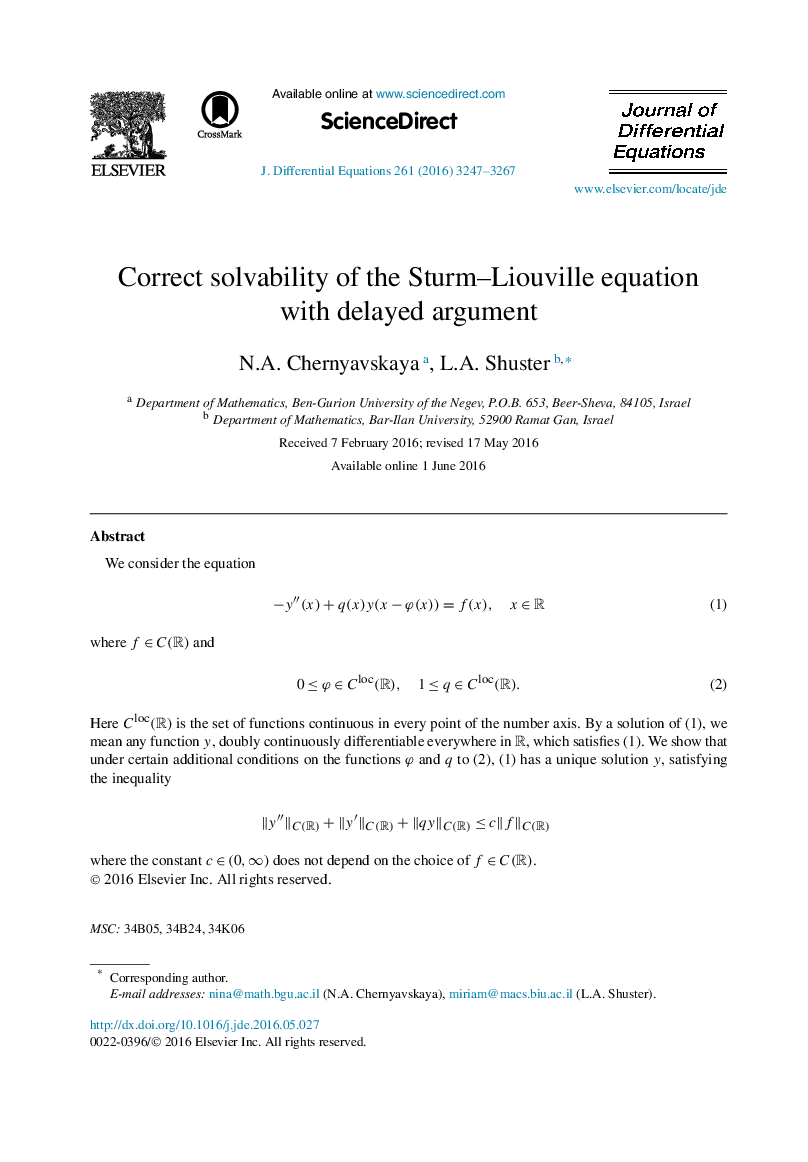| Article ID | Journal | Published Year | Pages | File Type |
|---|---|---|---|---|
| 4609404 | Journal of Differential Equations | 2016 | 21 Pages |
Abstract
We consider the equationequation(1)−y″(x)+q(x)y(x−φ(x))=f(x),x∈R where f∈C(R)f∈C(R) andequation(2)0≤φ∈Cloc(R),1≤q∈Cloc(R). Here Cloc(R)Cloc(R) is the set of functions continuous in every point of the number axis. By a solution of (1), we mean any function y , doubly continuously differentiable everywhere in RR, which satisfies (1). We show that under certain additional conditions on the functions φ and q to (2), (1) has a unique solution y, satisfying the inequality‖y″‖C(R)+‖y′‖C(R)+‖qy‖C(R)≤c‖f‖C(R)‖y″‖C(R)+‖y′‖C(R)+‖qy‖C(R)≤c‖f‖C(R) where the constant c∈(0,∞)c∈(0,∞) does not depend on the choice of f∈C(R)f∈C(R).
Keywords
Related Topics
Physical Sciences and Engineering
Mathematics
Analysis
Authors
N.A. Chernyavskaya, L.A. Shuster,
